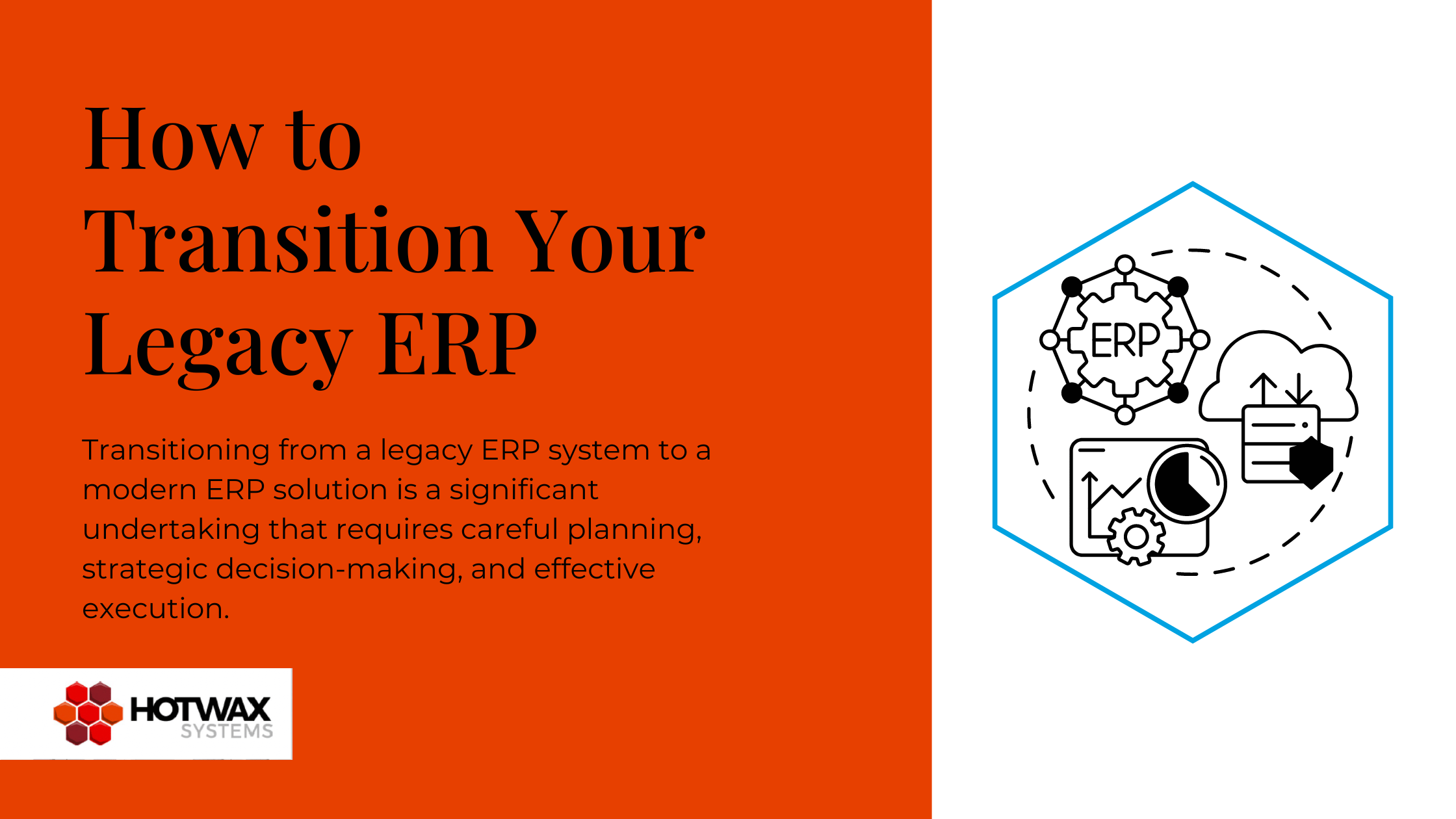Think of an ERP system as the central nervous system of an enterprise’s operations. It enables seamless integration of essential internal functions like accounting, human resources, supply chain management, etc. As technology continues to evolve, legacy ERP systems often become outdated and inefficient, slowing down processes they were supposed to speed up, which in turn prompts the need for transition.
What are legacy systems in ERP?
Legacy ERP systems are older, often outdated software solutions that have been in use for an extended period of time. These systems were typically designed to cater to specific business needs at the time of their implementation but now may lack the flexibility, scalability, and efficiency required to meet modern demands.
These systems are characterized by outdated technology, cumbersome interfaces, limited integration capabilities, and high maintenance costs. It can even get to the point where the teams responsible for using and maintaining the system no longer know how to perform all the essential functions they need to in order to best utilize the system.
What are the challenges of legacy ERP?
Legacy ERP systems can present a myriad of challenges, including:
- Outdated technology: Legacy systems often run on obsolete technology stacks, which can make them incompatible with more modern applications and hardware. This limits the org's capacity in many ways, including what additional systems they can incorporate into their operations.
- Limited functionality: Legacy ERP systems may lack essential features and functionalities required to support evolving business processes and industry standards. This ties in with reason #1 as well, since a core driver of an organization's ability to be nimble, responsive, and grow is the tech it relies on.
- Data silos: Data stored in legacy systems may be fragmented across different modules, which can make it challenging to access and analyze information in real time. It also defeats the purpose of having an ERP in the first place, since a core reason for ERP adoption is to streamline, consolidate and connect essential data across the organization.
- High maintenance costs: Maintaining and supporting legacy ERP systems can be costly due to outdated hardware, software licenses, and reliance on specialized expertise. While it's normal for any system to have a cost, and for customized systems to rely on a certain level of specialized expertise (for a time, at least), legacy systems frequently cost more than what they are worth and demand more time and effort than an updated system.
- Compliance risks: Legacy systems may not adhere to current regulatory standards, exposing businesses to compliance risks and potential penalties. This type of risk cannot be over stated, as the importance for certain industries to maintain high levels of security and regulatory compliance is huge.
How do I migrate from one ERP to another?
Migrating from a legacy ERP system to a modern solution requires careful planning and execution, and is often best done when partnered with a team of ERP implementation specialists. Here's a step-by-step guide to help you through that process:
- Assess: Evaluate your current ERP system's functionality, performance, and limitations to identify areas for improvement. This is the step where you confirm that you do, in fact, need to transition to a new system.
- Gather requirements: Define your business requirements and objectives for your new ERP system. Make sure to consider factors like scalability, integration capabilities, and user experience, as well as any other areas you are currently unhappy with your legacy system.
- Select your vendor(s): Take your time evaluating various ERP vendors based on your requirements, budget, and industry-specific needs. This will be the time to decide on a proprietary or open source solution, which may also help determine the kind of support you have access to for the actual implementation.
- Migrate data: A good implementation team will help develop a comprehensive data migration plan to transfer existing data from the legacy system to the new ERP platform. This will ensure data integrity and consistency throughout the process.
- Train: Your vendor, whether they’re a proprietary vendor or ERP consulting firm, should provide training and support to all system end-users in order to facilitate a smooth transition to the new ERP system and ensure widespread system comprehension, adoption, and utilization.
- Test and optimize: Make sure you conduct rigorous testing of the new ERP system to identify and address any issues or discrepancies before full deployment. Optimize workflows and configurations to maximize efficiency and performance. Your support team should be involved in this process, or at the very least kept in the loop about testing methods and results so they can help in any areas that need adjusting.
- Go-live: Implement the new ERP in a phased approach and gradually transition to full deployment across the organization. This can help make sure things go smoothly.
- Post-implementation support: Make sure you have access to ongoing support and maintenance to address any post-implementation issues and ensure the continued success of the new ERP system. Thorough understanding of your system and achieving autonomous maintenance is a realistic goal to have, but it’s also really nice to have access to outside support and guidance when you need it.
What are the five biggest challenges for ERP system implementation?
While ERP system implementation is a complex undertaking that poses several challenges, some of the main ones include:
- Change management: Resistance to change among employees can hinder adoption of the new ERP, so employing effective change management strategies and communication is key to ensuring a smooth and fruitful transition.
- Data integration: Ensuring seamless integration with existing systems and data sources is crucial for maintaining data integrity and accessibility.
- Customization: Balancing the need for customization with the risk of scope creep and increased implementation costs requires careful planning and prioritization. Make sure you are working with a seasoned team and have a good understanding of your system requirements to turn this from a risk factor into a beneficial element of your system change.
- Resource allocation: Adequate allocation of resources, including time, budget, and personnel, is essential for successful ERP implementation. Clear communication and proper planning can go a long way in helping to ensure this doesn’t become an issue.
- Vendor relationship: Building and maintaining positive relationships with ERP vendors is critical for ongoing support, updates, and future enhancements. Pick an implementation specialist who is experienced, communicative, and trustworthy.
When Should I Change My ERP System?
Deciding when to transition from a legacy ERP system depends on various factors, including:
- Performance issues: If your current ERP system is struggling to keep up with growing business demands or experiencing frequent downtime and performance issues, it may be time for a change.
- Scalability: If your business is expanding or undergoing significant changes, you need an ERP system that can scale with your evolving needs. A telltale sign of an ineffective legacy system is inability to scale as needed.
- Compliance: Changes in regulatory standards or industry-specific compliance requirements may necessitate an upgrade to ensure ongoing compliance and risk mitigation. If your existing system is unable to adapt and/or accommodate your compliance requirements, that’s a good sign it’s time for a change.
- Cost: If the cost of maintaining and supporting your legacy ERP system outweighs the benefits, it may be more cost-effective to invest in a newer, more modern solution.
- Competitive advantage: To remain competitive in today's fast-paced business environment, you need an ERP system that enables innovation, agility, and strategic decision-making. If your system is no longer doing that, it’s time to make a change.
Conclusion
Transitioning from a legacy ERP to a modern ERP solution is a significant undertaking that requires careful planning, strategic decision making, and effective execution. By addressing the challenges head-on and leveraging best practices, businesses can unlock the full potential of their ERP investment and drive long-term success.


